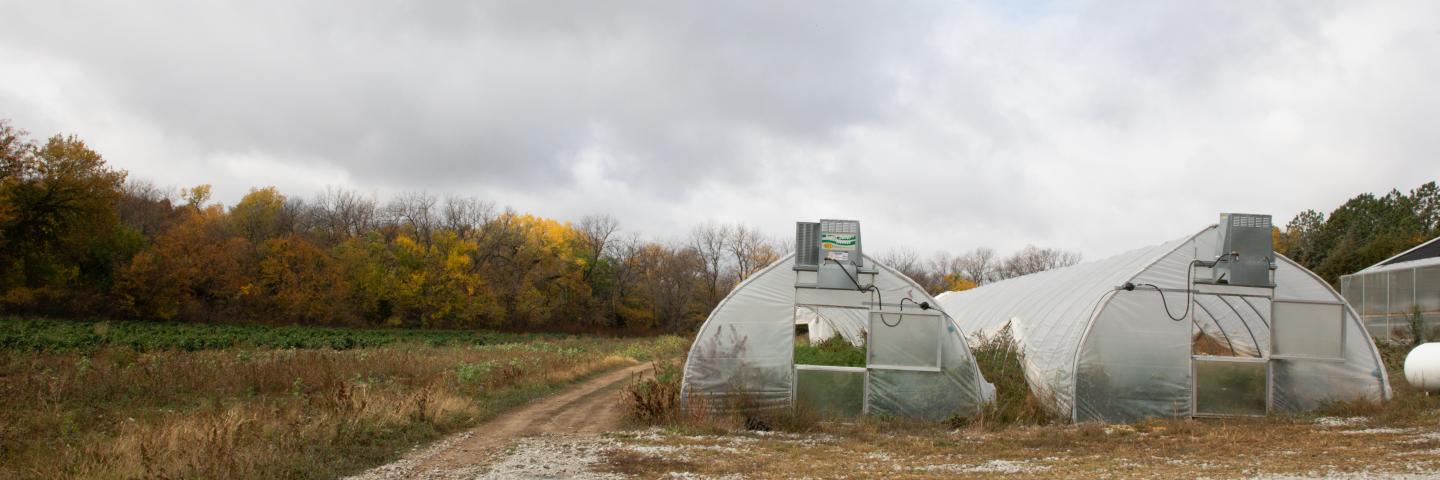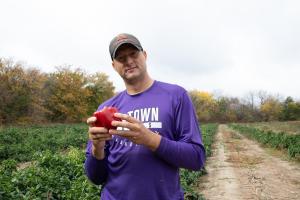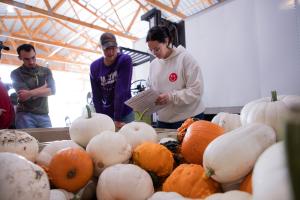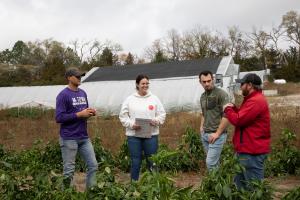High Tunnels and High Hopes

Story and photos by Jolene Bopp, Public Affairs Specialist, USDA-Natural Resources Conservation Service.
Eric Lund’s late father introduced him to farming, beginning with a half-acre plot when he was eight years old. Now, this farmer in Seward County, Nebraska, continues to grow and improve his small-scale operation inspired by tradition, innovation, and community.
“We started with local farmers’ markets in Seward, then Lincoln. Every year, we expanded a little,” he recalled. The farm has grown to cover 45 acres, offering a range of produce, plants, and eggs.

When his father passed away, it only fueled his ambition. “I kept expanding and learning. I tried new things every year,” he said.
Lund’s mother, Kathy, became his right hand. She helps with everything from irrigation systems to harvesting. Together, they’ve navigated challenges, celebrated reinvesting profits into the business, and watched their small farm grow, all of which have shown their commitment and resilience.
One challenge in the beginning was space. Lund decided to start growing flowers and other plants that required starting indoors. “At the time, I had about 2,000 flowers, vegetables, and herbs growing in a small computer room,” Lund said. This led to growing 15,000 pepper plants in the basement. While this worked to some extent, it wasn’t ideal.

Lund heard about potential programs through friends in his community. He began discussing his options with the USDA-Natural Resources Conservation Service (NRCS) to alleviate problems with growing starters in the basement. The local NRCS team visited with Lund to determine the best programs and practices needed for his plans.
He used NRCS’ Environmental Quality Incentives Program (EQIP) funding to build high tunnels to extend the growing season and provide better crop quality. “The high tunnels have been a game-changer,” he noted, while explaining how these structures help in environmental control and disease prevention. Lund is now able to get his products to the market three to four weeks earlier than those not using a high tunnel.

“The productivity and health of his crop is highly dependent on Nebraska weather and the amount of growing degree days available,” said Nichole Strand, Resource Conservationist in Seward for NRCS. “Due to this resource concern, we were able to help Eric apply for EQIP as a solution.”
This has not been a typical project as Lund grows many different crops and is different from the typical row-crop agriculture the local NRCS team typically sees. Due to the success of his first contact, Lund is looking to try additional practices, including cover crops for weed control, organic matter growth, erosion control, and adding irrigation systems.
“One successful project has led to a great partnership, where we have been able to address multiple resource concerns and put conservation work on the land,” Strand said. “He has been awesome to work with and is willing to try new things based on our recommendations while also teaching us in the process. We have all benefited in some way from this.”
Lund spent a lot of time trying to sell their products at farmers markets when the high tunnel was first built. Unfortunately (and fortunately), they were producing so much they began having a hard time selling it all. Lund started supplying Hy-Vee through building relationships and sheer determination and willingness to experiment. One store grew into another, and now their produce is available at four local Hy-Vees.

Lund also participates in local initiatives like the farm-to-school program, providing fresh produce to local schools. “I love giving back. I used to coach basketball and still participate in the teammate's program at the local elementary school,” he added.
Despite the farm’s growth, challenges remain. Finding reliable labor, managing costs, and dealing with weather uncertainties are constant hurdles. Yet, Lund remains optimistic, fueled by his passion for farming and community engagement.
“You have to love this job. It’s hard work, but it’s rewarding,” Lund said.
Looking to the future, Lund envisions further diversification.
“We’re considering venturing into berry cultivation.”
He continues looking for new opportunities to grow and serve the community better. When talking to aspiring farmers, he stresses starting small and growing gradually. “Understand it’s a journey. Reinvest in your business, and don’t rush,” he advises.
For more information about conservation practices and programs to help treat natural resource concerns on your land, visit your local NRCS office or the NRCS website.
#

